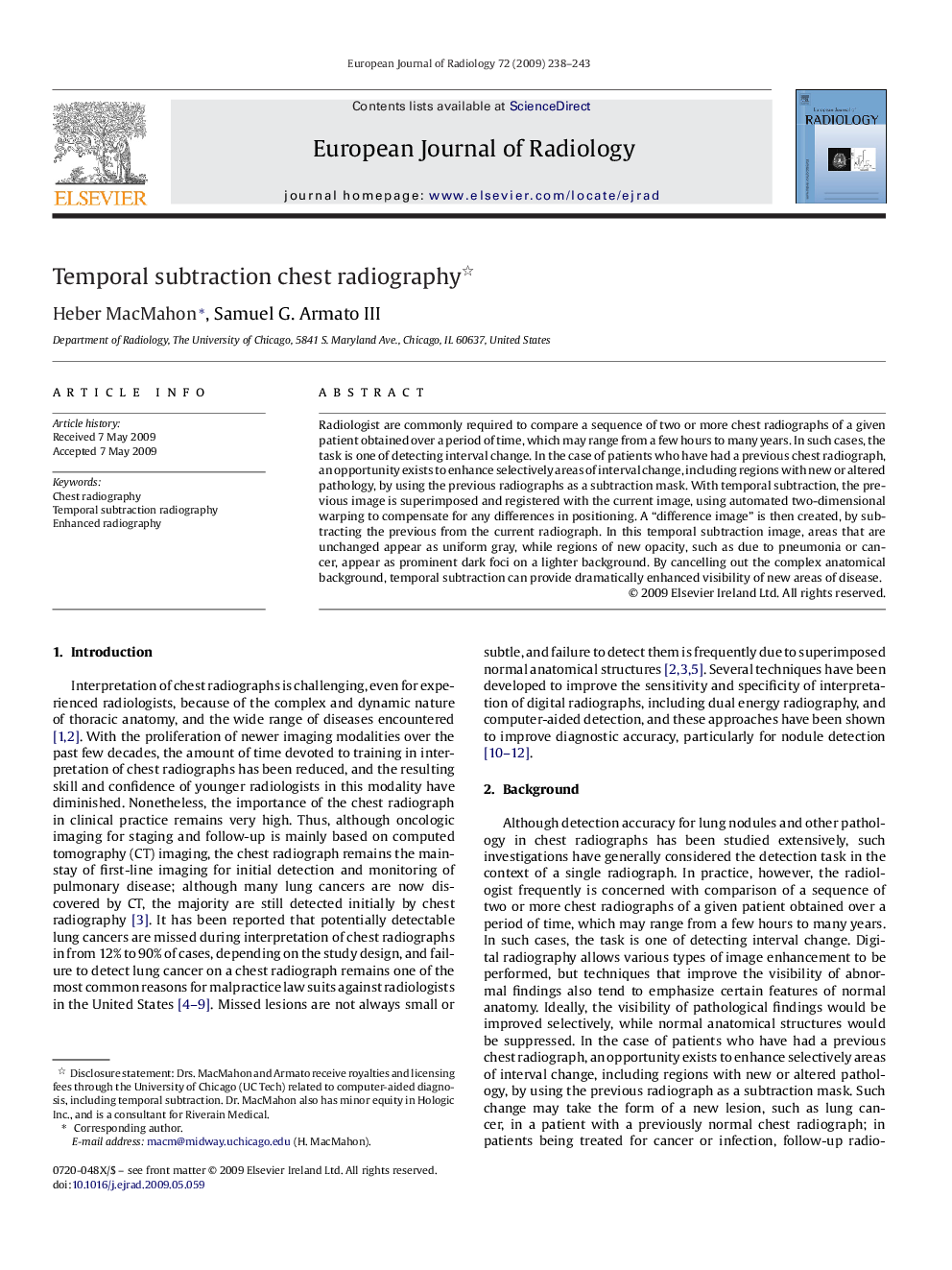| Article ID | Journal | Published Year | Pages | File Type |
|---|---|---|---|---|
| 4227261 | European Journal of Radiology | 2009 | 6 Pages |
Radiologist are commonly required to compare a sequence of two or more chest radiographs of a given patient obtained over a period of time, which may range from a few hours to many years. In such cases, the task is one of detecting interval change. In the case of patients who have had a previous chest radiograph, an opportunity exists to enhance selectively areas of interval change, including regions with new or altered pathology, by using the previous radiographs as a subtraction mask. With temporal subtraction, the previous image is superimposed and registered with the current image, using automated two-dimensional warping to compensate for any differences in positioning. A “difference image” is then created, by subtracting the previous from the current radiograph. In this temporal subtraction image, areas that are unchanged appear as uniform gray, while regions of new opacity, such as due to pneumonia or cancer, appear as prominent dark foci on a lighter background. By cancelling out the complex anatomical background, temporal subtraction can provide dramatically enhanced visibility of new areas of disease.
